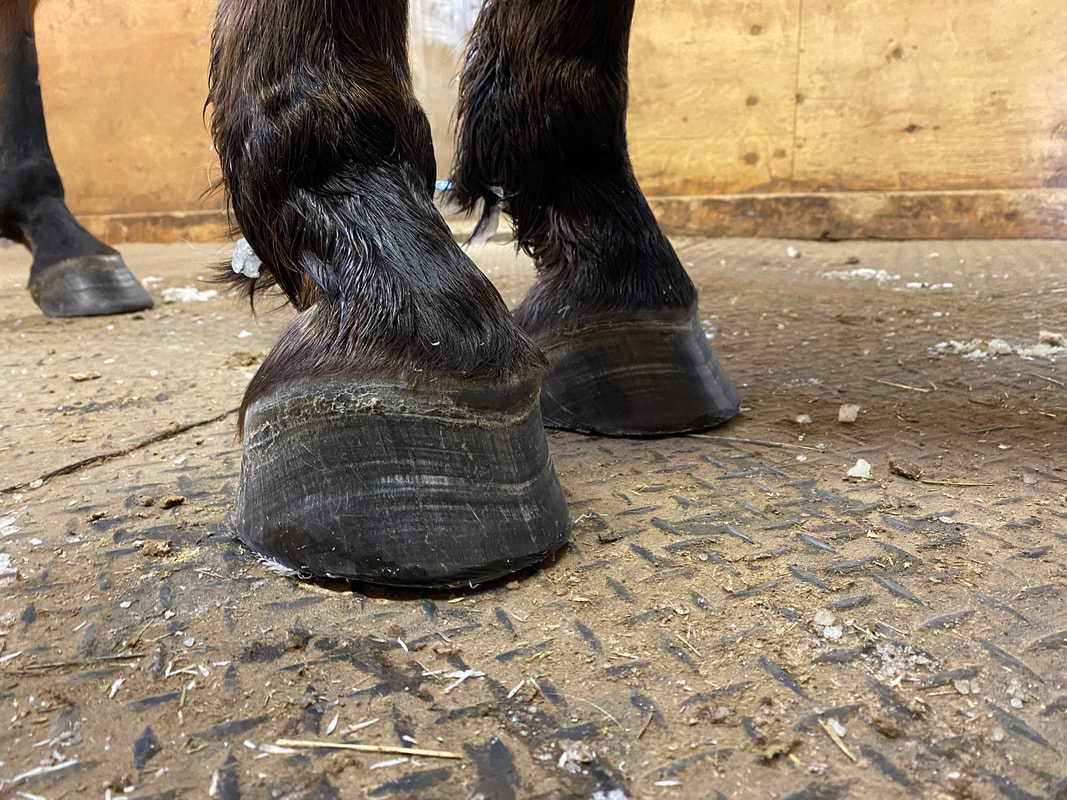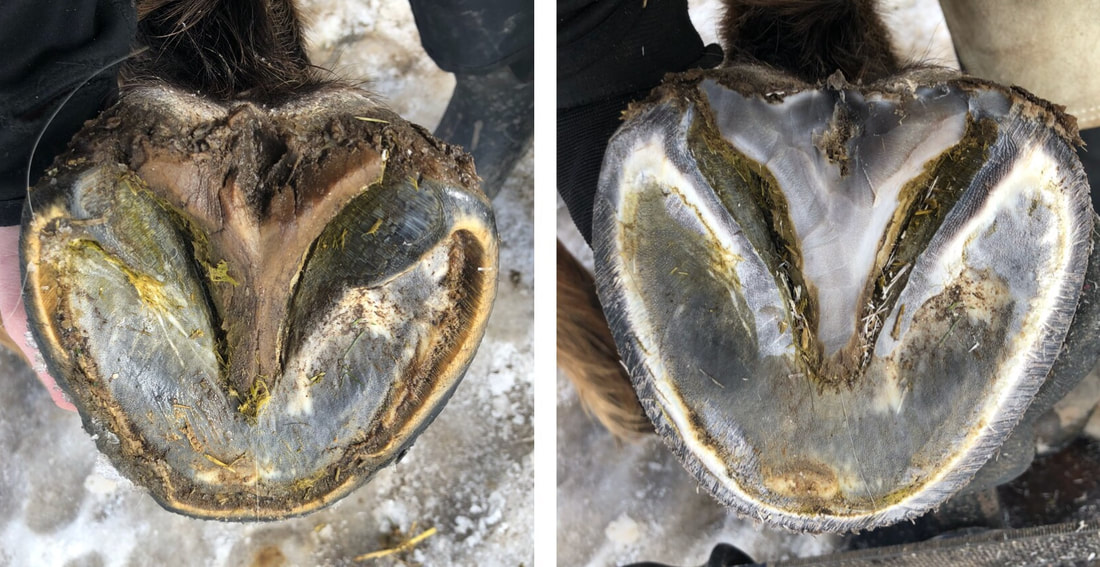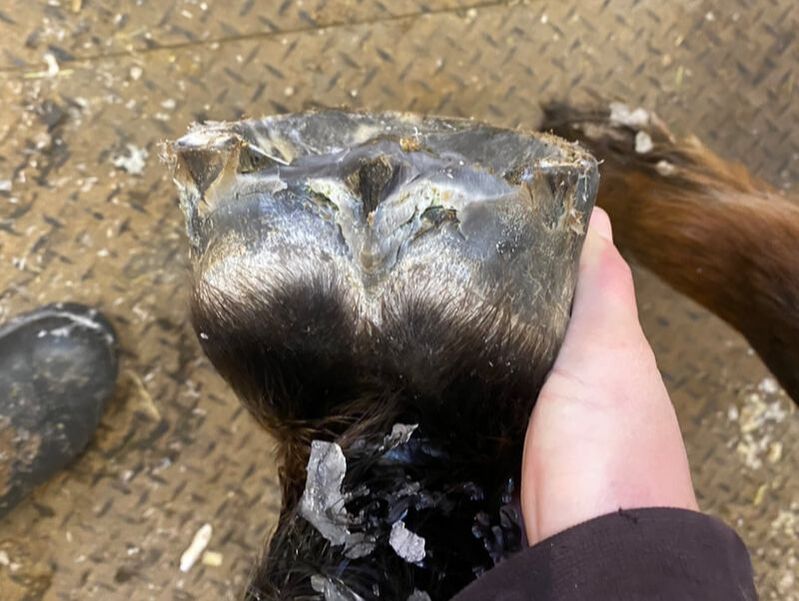Contracted Tendons, Club foot, Crenas Oh my!
Feb 06, 2022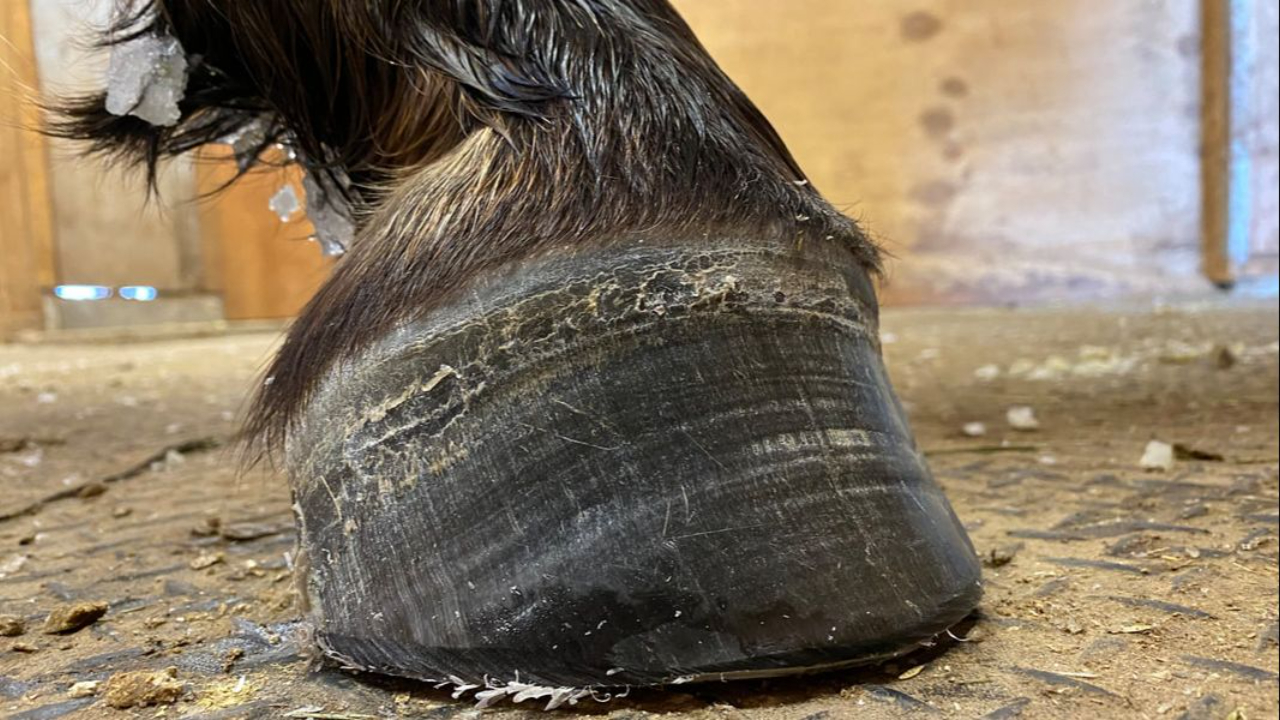
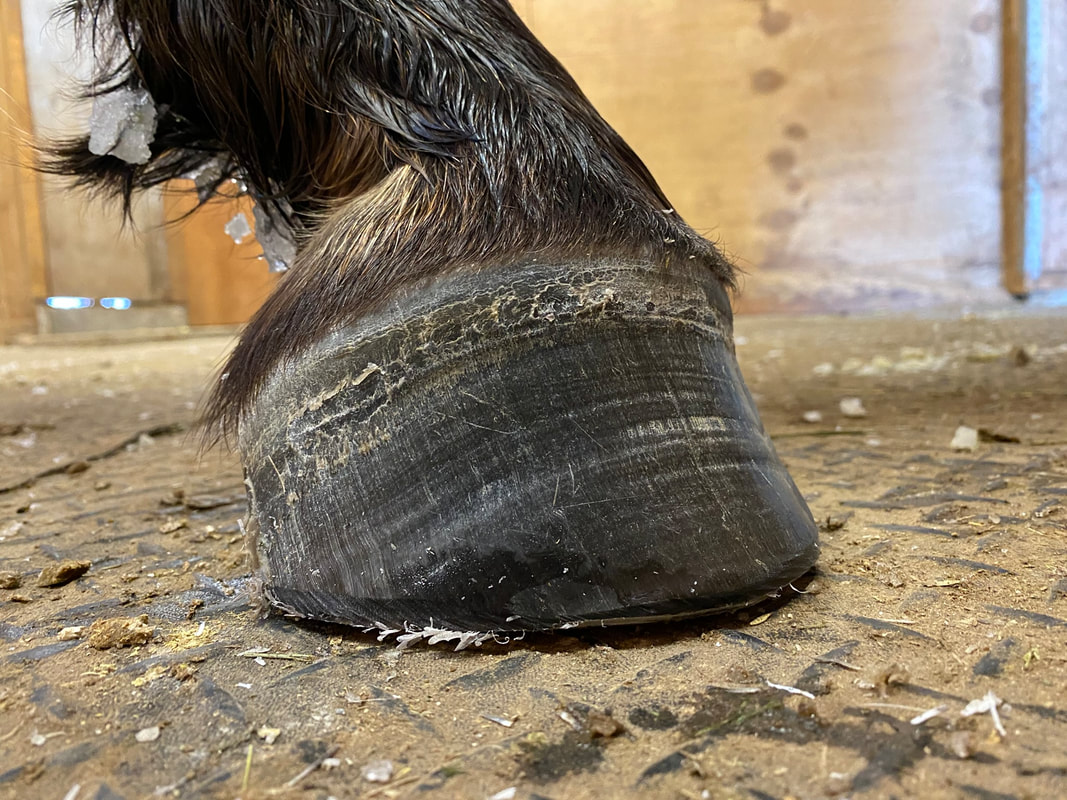
I got a lot of interesting comments when I posted this picture on social media the other day. I thought I would take a minute to explain this horse's situation and how I handle it.
This horse has bi-lateral contracted tendons, which means both DDFT's on his front legs are short, and also has a club foot on his front right, and a suspensory injury on that front right. This poor horse just has the deck stacked against him.
Dealing with the contracted tendons is tricky. It's important to perform the "stretch test" to determine his ability to extend the DDFT's before deciding how much to lower his heels. The stretch test is when I extend his leg forward and straighten the the knee, and then fully extend the fetlock and pastern. Through this we can measure the horse's range of motion and comfort level. It's important to do this a couple of times and form an assessment based on multiple attempts. Assuming he has a good range of motion and can extend the leg I can then decide to lower the heels based on his extension capabilities. I also use this stretch to help determine heel height on club hooves.
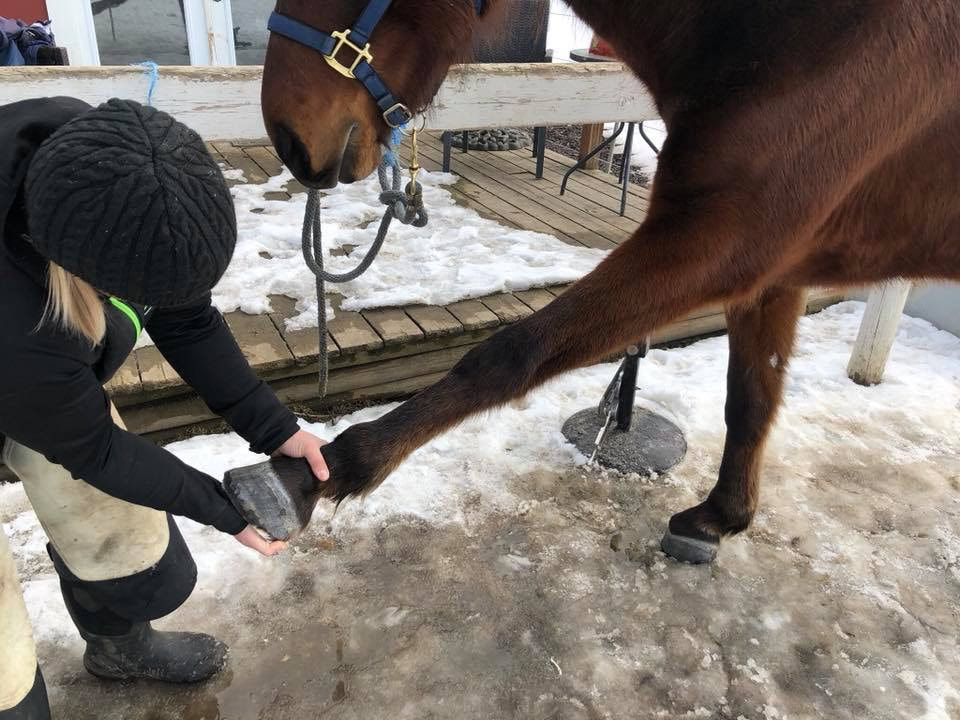
Performing the stretch test (above), in this case we could straighten the knee and extend the fetlock. The last step is to fully extend the pastern but tipping the toe up toward the sky. I do this very gently, allowing the horse to pull away at any moment if the stretch become too much.
This is just one thought process I use when determining heel height, I also need to assess the hoof itself, including the pastern angle and the frog health, sole depth etc.
From the bottom of the hoof I want the heels to ideally be in line with the collateral groove exits, the frog height and sitting just a little bit above sole level.
This horse grows hardly any toe, and due to the contracted tendons and club foot the dorsal angle of the coffin bone is quite steep. This leads me to suspect possible coffin bone rim edge damage, due to the fact the coffin bone is perpetually on it's tip. He also has a small crena in the sole at the toe further leading me to this conclusion. A crena is a little dip in the sole, caused by a missing piece of coffin bone, which in turn means there is a missing piece of the solar corium that grows the sole. This results in a tiny divot in the sole, usually right where the tip of the coffin bone would be.
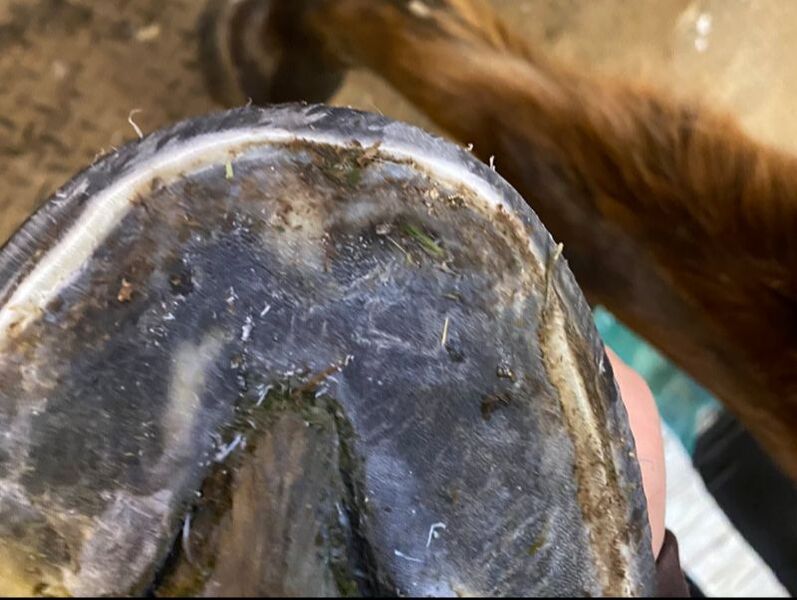
You can see above the slight divot in the center at the toe immediately behind the golden line. The golden line dips down and in this picture there is a bit of dirt stuck into the recessed golden line.
So what's my plan? Generally speaking he has good flexibility in the leg so I can lower the heels about a 1/4 inch at each trim. This leaves them sitting about a 1/4 inch above the height of the sole. In a perfect world I'd like to trim him every two weeks and lower them and 1/8 of an inch at a time instead. I rarely trim the toe other then applying a bevel from the golden line outward, and I usually have a bit of frog to trim and clean up. Thankfully he grows very nice upright and manageable bar so trimming it is easy. I just ramp it down from the heel following the natural concavity of the hoof.
I usually apply a bevel to the heels anytime I have to leave them higher then I would like to. This can also be called a "rocker".
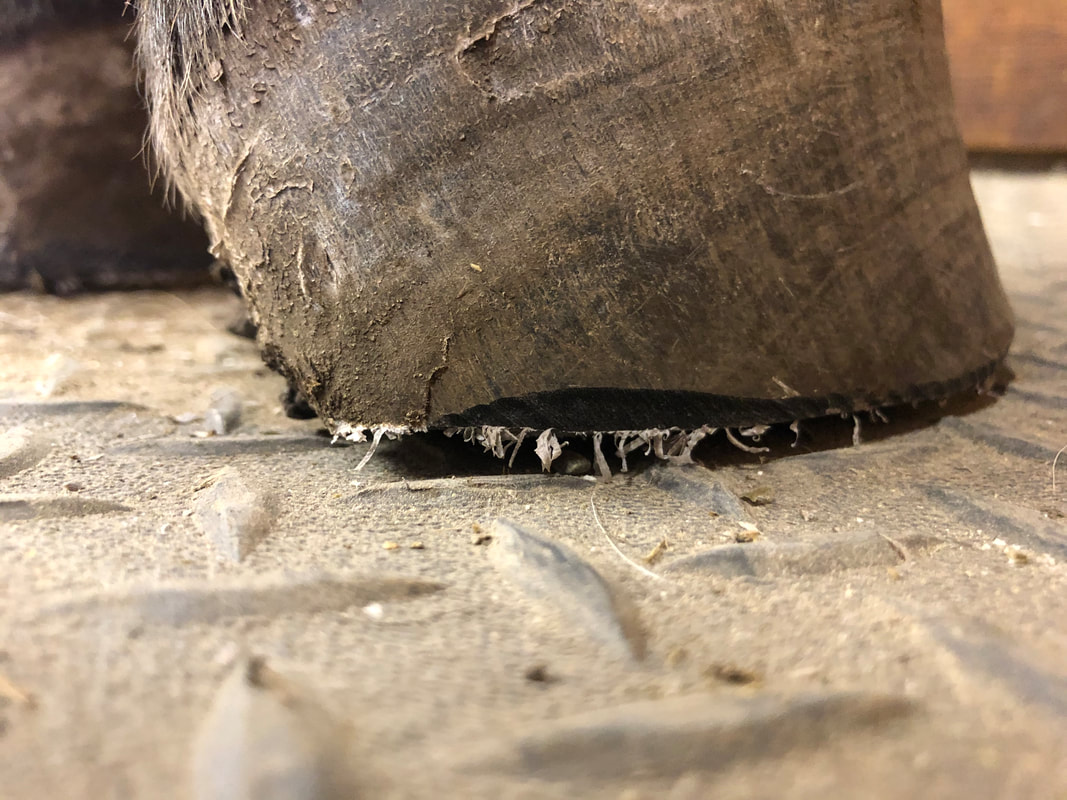
A "rocker" (above) allows the heel to float just a tiny bit off the ground while the rest of the hoof is weighted.
With a rocker applied, during motion the horse must extend his stride and flex the tendon just a little bit more in order to land heel first. You must be very careful with this that you don't ask them to extend any farther then they can comfortably handle. If you trim your heels too low or apply too much rocker you could cause them to land toe first to alleviate the discomfort, and/or risk injury. My aim to to ask for an 1/8 of an inch, and over time keep bringing that heel down until it is at a normal level. This of course is the plan, but it is sometimes a work in progress throughout the entire lifespan of the horse.
Adding to this complicated case is the suspensory injury this horse has. He has an old fractured split bone and as the lower branch of the medial suspensory ligament moves across it becomes torn and jagged. This has lead to an abundance of scar tissue forming, creating less flexibly and range of motion and frequent bouts of lameness as the inflammation flares up. This pertains to my job aligning the hoof as I don't want to further aggravate the injury, so I am forced to trim very conservatively until the owner and vet decide on a course of action for this reoccurring issue.
